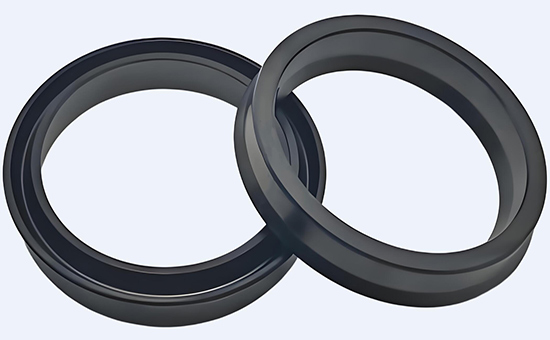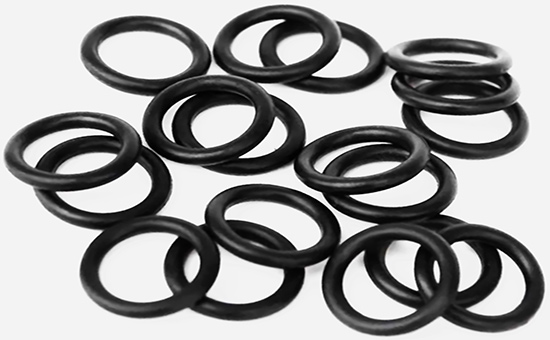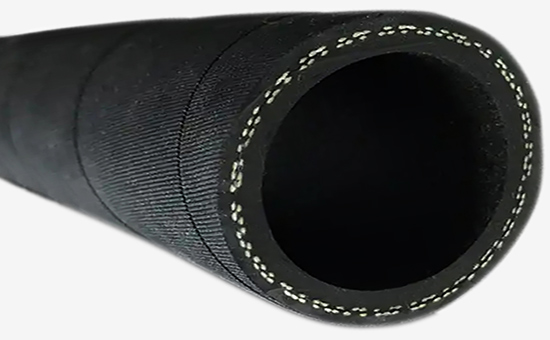Nitrile reclaimed rubber retains the basic performance characteristics of nitrile rubber, with excellent oil resistance and wear resistance. It can be used alone or combined with nitrile rubber or chloroprene rubber to produce various rubber products, effectively reducing raw material costs. Different types of nitrile reclaimed rubber products have different hardness requirements. Rubber product manufacturers need to choose the appropriate reclaimed rubber products according to actual needs and adjust the hardness of nitrile reclaimed rubber compounds through formulation to meet the hardness requirements of more rubber products.
1. Techniques for adjusting the hardness of nitrile rubber in the vulcanization system
Adjusting the crosslinking density can regulate the hardness of regenerated nitrile rubber. The degree of crosslinking in the rubber compound is controlled by adjusting the types and amounts of curing agents, accelerators, activators, and other additives in the vulcanization system.

When nitrile reclaimed rubber is vulcanized with sulfur, increasing the amount of sulfur will raise the rubber's hardness. Generally, for soft rubber, the sulfur amount is 0.2–5 parts; a sulfur amount above 5 parts produces semi-hard rubber, and 35–50 parts of sulfur can produce hard rubber with very high hardness, even reaching a crosslinking saturation. When the degree of vulcanization is constant, rubber vulcanized mainly with -C-C- crosslinks shows a rapid increase in hardness, whereas rubber vulcanized mainly with polysulfide bonds exhibits a very slow increase in hardness.
When producing rubber products using regenerated nitrile rubber, the use of highly active accelerators such as thiazoles, guanidines, and sulfenamides can increase the hardness of vulcanized regenerated nitrile rubber. In particular, thiazole accelerators like TMTD have a significant hardening effect. Generally, increasing the amount of accelerator will accelerate the vulcanization of regenerated nitrile rubber, thereby affecting the hardness of the rubber compound.
2. Techniques for adjusting the hardness of nitrile rubber using a filler system
In the production of nitrile reclaimed rubber products, the type and amount of filler are the main factors affecting the hardness of vulcanized rubber. Adding fillers to nitrile reclaimed rubber increases rigidity and hardness. Different types of fillers have varied effects on the hardness of vulcanized rubber. Carbon black with a high structure, small particle size, and high activity significantly increases hardness.

3. Techniques for adjusting the hardness of nitrile rubber with softening and plasticizing systems
Reasonable use of softeners can adjust the hardness of regenerated nitrile rubber; adding softeners and plasticizers to regenerated nitrile rubber can increase the distance among rubber molecular chains, weaken intermolecular forces, and reduce the hardness of the rubber; regenerated nitrile rubber with a hardness below 55 can use a certain amount of softening and plasticizing agents to adjust the hardness.
4. Accelerating agents for quickly increasing the hardness of regenerated nitrile rubber
The nitrile rubber/nitrile reclaimed rubber blend uses multifunctional acrylate oligomers (oligoesters, magnesium methacrylate, zinc methacrylate) combined with hot-melt phenolic resins, which can effectively increase the hardness of vulcanized rubber; the hardening agent benzoic acid can soften the unvulcanized nitrile reclaimed rubber while hardening the vulcanized rubber; the alkyl phenolic resin/curing agent combination system can improve the hardness of the rubber compound. Common phenolic resins include phenol-formaldehyde resin, alkyl resorcinol-formaldehyde resin, and alkyl resorcinol epoxy resin, while curing agents include hexamethylenetetramine, RU-type modifiers, and nitrogen-containing heterocyclic compounds such as anhydrous formaldehyde aniline.

Nitrile reclaimed rubber can be used alone or combined with nitrile rubber to produce nitrile O-rings, oil seals, cup seals, diaphragms, oil-resistant rubber gaskets, bellows, seals, oil-resistant hoses, oil-resistant rubber sheets, oil-resistant rubber boots, rubber tapes, rubber diaphragms, and other oil-resistant rubber products, as well as rubber shock absorbers, friction blocks, and other wear-resistant miscellaneous parts. Adjusting the hardness of nitrile reclaimed rubber requires comprehensive consideration of the synergistic effects of the vulcanization system, reinforcement filler system, softening and plasticizing system, and special additives.
Exclusive original article [commercial authorization] reprint, excerpt and excerpt in any form are prohibited without written authorization. Focus on Hongyun rubber: learn the process formula and raw material technology of producing rubber products from recycled rubber to help you reduce costs and increase profits